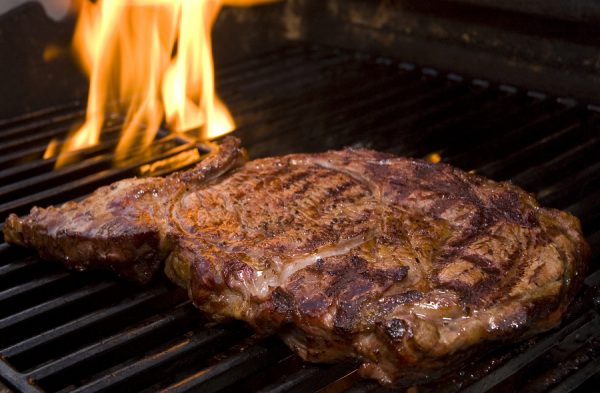Is Beef Still “What’s for Dinner”?

Some of you may remember the “Beef. It’s What’s for Dinner” campaign that debuted in 1992. Twenty-six years later, beef is still a mainstay of the American diet, and that doesn’t look to be changing any time soon. According to the United States Department of Agriculture, in 2017 Americans ate, on average, about 55 pounds of beef. That’s up from about 54 pounds in 2016. Clearly, we love our beef.
Beef’s Benefits
The smell of a steak or burger sizzling away on the grill can make just about anyone’s mouth water. And, yes, beef (and red meat in general) has gotten somewhat of a bad rap over the years. But you might be pleasantly surprised to learn that beef has a lot going for it when it comes to nutrition. First, the beef that most of us eat today is leaner than in years past, thanks to breeding practices, feeding cattle more grass than grain, and trimming more fat from beef. Second, beef contains a number of important nutrients, including:
- Protein
- Iron
- Zinc
- Selenium
- B vitamins
If your goal is to lose weight, don’t count out beef: a 3-ounce serving (about the size of a deck of cards) of sirloin steak contains just 160 calories, 26 grams of protein, 5 grams of fat, and 2 grams of saturated fat.
Beef is considered to be a source of high-quality protein because it contains all of the essential amino acids. Protein, in turn, is an important nutrient for a number of reasons, including maintaining muscle mass, repairing tissue, and supporting a healthy immune system.
The iron in beef, known as “heme iron,” is needed to make hemoglobin, a protein that carries oxygen from the lungs to other parts of the body. Getting adequate iron in your diet can safe-guard against iron-deficiency anemia.
You might be interested to learn that when eaten in moderation (about 4 to 5 ounces), with plenty of fruits, vegetables, and grains, beef may actually lower LDL (bad) cholesterol levels. How? Today’s beef contains a fair amount of healthy monounsaturated fat, along with stearic acid, a type of saturated fat that has been shown to improve cholesterol levels.
Beef’s Bad Rap
While beef certainly has its nutritional merits, there are some health concerns that are linked to eating beef. These health risks are especially important to be aware of if you have or are at risk for diabetes.
- Heart disease: Heart disease is the leading cause of death in the United States, and people who have diabetes have more than double the risk of developing heart disease compared to people without diabetes. While the beef we eat today is leaner and healthier, it still contains saturated fat, the unhealthy fat thought to raise cholesterol levels and, subsequently, raise the risk of heart disease.
- Diabetes: Three important studies all found that eating more red meat for an extended period time was linked to a higher risk of developing type 2 diabetes.
- Colorectal cancer: Eating more than 50 grams (about 2 ounces) of beef (and other red meats) each day may increase the risk of colorectal cancer by as much as 21%. This risk may be due to the formation of certain compounds in the gut after ingesting, or due to mutagens that form due to grilling or smoking meat. Colorectal cancer risk is about 27% higher in people with type 2 diabetes compared with people who don’t have this condition.
Mortality: A 2012 study from Harvard showed that eating a 3-ounce serving of red meat every day was linked to a 13% higher risk of premature death compared with people who did not eat much red meat at all. The researchers suggest that the increased risk of death may be related to the saturated fat, cholesterol and iron content of the meat, as well as the formation of cancer-causing compounds that can form when meat is cooked at high temperatures. This study does not prove a cause-and-effect relationship between beef and an early death, however, as there may be other contributing factors.
Beef’s Bottom Line
Health risks aside, beef can definitely be part of a healthful diet. Some tips to help you safely enjoy beef include:
- Choosing lean or extra-lean cuts of beef, such as sirloin, tenderloin, flank, top round, bottom round, eye round, and 90 or 95% lean ground beef. Also, go for choice or select grades of beef, rather than prime.
- Making vegetables, legumes and whole grains the focal point of your plate, rather than meat.
- Grilling, broiling or roasting beef instead of frying it. When grilling beef, avoid charring or burning the meat to lessen the formation of cancer-causing compounds. Try using a lower-heat setting on your grill.
- Keeping portions to between 3 and 6 ounces, no more than twice per week.
- Practicing food safety when cooking beef: cook steak to 145 degrees Fahrenheit, and burgers to 160 degrees Fahrenheit.

